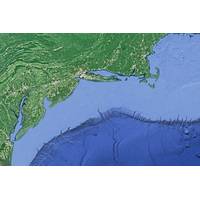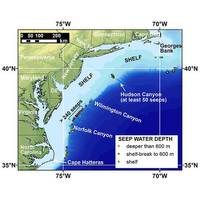Scientists Uncover Explanation for Hidden Ocean Swell Interactions

Better simulations of internal tides may benefit sonar communications, protect offshore structures, and more. In certain parts of the ocean, towering, slow-motion rollercoasters called internal tides trundle along for miles, rising and falling for hundreds of feet in the ocean’s interior while making barely a ripple at the surface. These giant, hidden…
Study Reveals US Atlantic Margin Methane Seep Expansion

A study conducted by Mississippi State University researchers, the U.S. Geological Survey and other institutions, reveals that the natural methane leakage from the U.S. Atlantic margin seafloor extends beyond prior knowledge gathered on the issue. Methane plumes identified in the water column between Cape Hatteras, North Carolina and Georges Bank, Massachusetts…